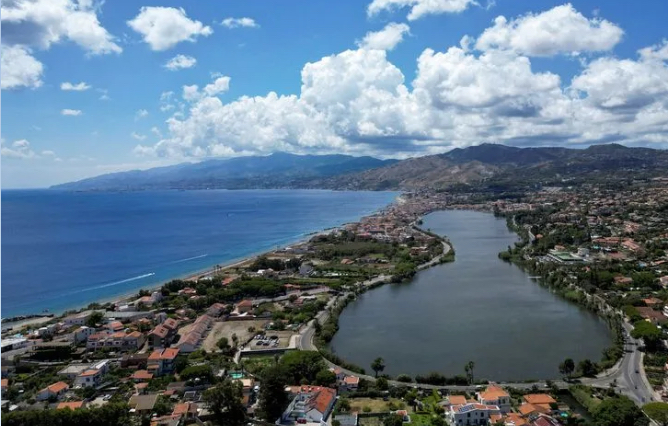
Published :
Updated :

For decades, the story of southern Italy has been one of departure, of generations leaving the hills of Calabria and the shores of Sicily in search of opportunity in the industrial north or abroad.
Now however, growing numbers of migrants are being lured back by improving job prospects and infrastructure projects, offering hope that the chronic wealth divide between Italy's regions could finally begin to narrow.
Italy has the euro zone's third largest economy but regions such as Sicily, Campania around Naples and Calabria in the toe of the peninsula are among the poorest in the currency bloc, Eurostat data shows.
A lasting recovery in the south would stabilise internal migration flows, potentially improving public services and giving a competitive boost to Italy as a whole.
SOUTH'S GDP AND JOB GROWTH OUTPACE NORTH
Cristian Imprescia, a 52-year-old geologist who returned to his native Sicily in 2019 after years in northern cities from Genoa to Bolzano, said infrastructure development in the south has given him a constant flow of work in ground surveys for railways and other projects.
"I am getting so many proposals I can barely keep up," he said.
Economic growth in southern Italy, known as the "Mezzogiorno", outpaced the rest of the country for a third year running in 2024, buoyed by a surge in construction linked to the European Union's post-COVID-19 Recovery Plan (NRRP).
The region, long stereotyped as "backward" by many in the north, is now showing signs of revival.
The south's gross domestic product rose 8.6% between 2022 and 2024, outstripping the 5.6% growth recorded in the rest of the country in that period, according to data from the Italian research institute SVIMEZ, which specialises in analysis of the southern economy.
"This kind of sustained outperformance hasn't happened in decades," said SVIMEZ director Luca Bianchi.
Italy's NRRP allocation from the EU will total some 194 billion euros ($227.45 billion) between 2021 and the end of the scheme in 2026.
At least 40% is earmarked for the south, which accounts for about a third of Italy's population of 59 million, and just 22% of its output.
Employment in the region rose 2.2% last year, well above the national average of 1.6%, as jobs in the construction industry surged 6.9%, data from national statistics bureau ISTAT shows.
Meanwhile, the number of southern Italians working in central-northern regions fell 3.6% in 2023, according to SVIMEZ, indicating a shift in migration patterns.


 For all latest news, follow The Financial Express Google News channel.
For all latest news, follow The Financial Express Google News channel.